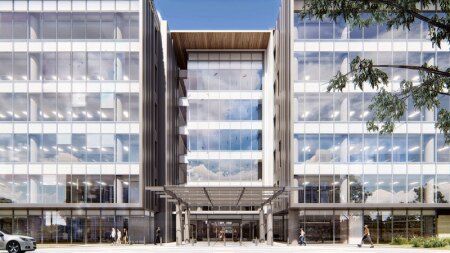Texas has tremendous potential to lead the world in transitioning to clean energy.
When you think of oil and gas production, you think of Texas. Ever since oil was discovered here in 1894, Texas has been the recognized energy capital of the world—home to more than 12,300 oil and gas companies. What you might not know is that Texas is also the largest producer of renewable energy in the United States in the form of wind, solar, hydrogen, and biofuels. The potential for Texas to lead the United States and the world in transitioning to clean energy is tremendous. All it takes is vision and commitment. Here is where private industry influencing public policy can make a huge impact on the future.
To date, concern about climate change has not been a big motivating factor in Texas’s state government policy. But, Texas prides itself on having one of the best business environments in the country, and renewable energy offered an interesting new business opportunity.
About 17 years ago, the state legislature decided that wind farms would be a good business for West Texans who had plenty of land and lots of wind. So, the legislature appropriated roughly $7 billion to build massive transmission lines that would bring wind energy from West Texas to Dallas/Fort Worth, Houston, San Antonio, and Austin. Even though reducing carbon emissions really did not factor into the legislature’s original thinking, it has happened. According to the American Wind Energy Association, wind energy helped Texas remove carbon emissions that are the equivalent of taking 11.5 million vehicles off the road.
At present, Dallas/Fort Worth (DFW) is home to 24 Fortune 500 company headquarters, trailing only New York and Chicago. Demographers project that the population of DFW will reach 10 million sometime in the 2030s, surpassing Chicago to become America’s third-largest metropolitan area. The pro-business environment of Texas—with relatively few regulatory restrictions, a skilled workforce, a low cost of living, and low taxes—has been a major factor in attracting corporate relocations.
But times are changing. More and more companies are considering factors other than taxes and affordable housing. Quality of life, equity, health, and access to clean water, air, and the natural environment are increasingly important to businesses, investors, employees, and the general public.
When the United States withdrew from the Paris Agreement in 2017, Dallas, Austin, San Antonio, Houston, and Laredo pledged to continue working toward fulfilling the original commitment. Dallas passed the Dallas Comprehensive Environmental & Climate Action Plan (CECAP) in May 2020, which calls for all new construction to be net zero by 2030. A recent report from the University of Texas at Austin noted that Texas can eliminate carbon pollution in less than 30 years and that decarbonization will burgeon the state’s economy.
So, public policy and public demand are converging, inching the United States toward a cleaner energy future. But we have a long way to go, especially in the construction industry. Today, 38 percent of global carbon dioxide emissions come from buildings and construction. According to a recent United Nations Environment Program report, emissions from the operation of buildings hit their highest-ever level in 2019.
The report further states that to get the buildings sector back on track to achieve net zero carbon by 2050, all stakeholders (owners, investors, developers, architects and designers, suppliers, contractors, subcontractors, engineers) across the building value chain (planning, design, construction, operation) need to increase decarbonization actions and their impact by a factor of five.
As a signatory of the U.N. Global Compact, HKS has pledged to meet the terms of the AIA 2030 Commitment and help reach the 2050 decarbonization goal here in Texas and around the globe. We cannot do this alone. We need the support and involvement of our clients, consultants, contractors, suppliers, communities, policymakers, and government officials.
Architects are in a unique position to be catalysts for this change. We can start by having a conversation with all participants in a project at the earliest stage to examine energy and carbon reduction strategies through design, construction, and, of greatest importance, the building’s operation. This discussion includes the exploration of embodied carbon reduction that can be realized in informed material selection. Our designers and engineers routinely conduct a life-cycle assessment (LCA) to help determine optimal design outcomes that align with client and community goals. We are doing this with clients across the broad spectrum of sectors we serve from health to education, sports to mission critical, residential, and commercial/mixed use to senior living.
Two recent projects in the DFW area that illustrate our dedication to design for resources and energy reduction strategies are the new Arlington Independent School District Center for Visual and Performing Arts and Parkland Health and Hospital System’s Moody Outpatient Center. Both involved engaging clients and other stakeholders in early discussions of purpose, desired outcomes, material selection, and embodied carbon reduction strategy.
As the founder of mindful Materials (mM) in 2014, HKS has been at the forefront of material transparency, especially in the labeling of material ingredients and environmental impact. In conjunction with other industry partners, we transformed this tool into a cloud-based, crowd-sourced advocacy hub and industry data platform, creating a common framework for material choices and data to act on embodied carbon reductions. The neutral platform changed the way that architecture and design professionals identify and search for products across brands, product categories, and certifications.
Other firms have picked up the gauntlet to explore ways to mitigate carbon. In a recent seminar, Adam Slakman, Hines vice president, global ESG, outlined the increasing importance of carbon reduction to Hines investors and tenants. The firm just published its Embodied Carbon Reduction Guide, which outlines its plan to reduce carbon. And Slakman shared that many of his firm’s investors are enlisting the firm’s aid in bringing their real estate portfolios into compliance.
Blackstone, which represents pension funds, large institutions, and individuals and is the largest owner of commercial real estate globally, set a 15 percent emissions reduction target for all new investments that includes energy conservation, procurement, offsets, and carbon renewal strategies not just to align with decarbonization goals, but also as a competitive business strategy. Since 2019, the firm has committed roughly $16 billion in investments that it believes are consistent with the broader energy transition.
Working with our industry partners, we are exploring the advantages of renovating existing buildings and repurposing spaces and materials that can significantly decrease the amount of carbon associated with new materials and reduce debris and waste sent to landfills. We support a circular economy approach as defined in draft London Plan Policy S17 to reusing buildings and materials and designing for material efficiency, long life, and perpetually cycling.
The population of the Dallas/Fort Worth metropolitan statistical area is projected to reach 13 million to 16 million by 2050, according to the Texas A&M Real Estate Center—more than double the population today. Climate scientists say that global warming is inextricably linked to population growth. Texas already consumes more energy per capita than any other state, according to the U.S. Energy Information Administration.
Dallas’s central business district comprises 40.9 million square feet (3.8 million sq m) of commercial space today, according to JLL. To meet the demands of projected growth, it is estimated that construction and renovation will proceed at an unprecedented pace. If we build and retrofit within the framework of the AIA Design for Excellence, we can meet the challenge of the future and create cities and communities that are not only net zero but that are also healthier, more accessible, and more equitable. Texas can lead the way in converting to clean energy.
DAN NOBLE is the Dallas-based president and chief executive officer of HKS.






